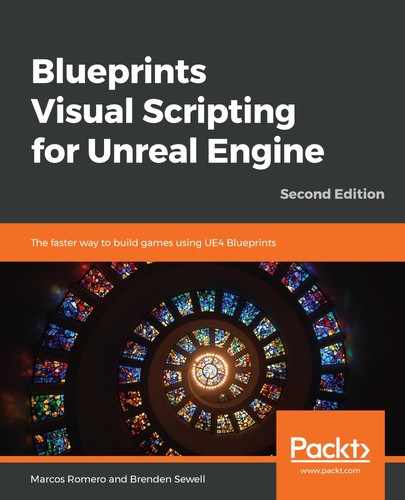Unreal Engine 4 offers a wide variety of platforms that you can choose from to build your game, and this list will continue to expand as newer versions of the engine are released and new technologies emerge. Currently, you can deploy your game on Windows PC, macOS, iOS, Android, Linux, SteamOS, and HTML5. This engine also supports the creation of content that utilizes the various emerging virtual reality platforms, such as Oculus Rift. If you are a registered console developer with the appropriate development kit, you will be pleased to know that Unreal Engine 4 also supports the creation of games for the Xbox One and PlayStation 4. Each platform has its own unique requirements and best practices associated with it for game development. Mobile and web (HTML5) games, in particular, have higher optimization requirements in order to get games to perform well on those platforms.
Creating a distributable form of your game for one of these platforms involves a process called packaging. Packaging takes all of the code and assets of the game and sets them up in the proper format to be able to perform on the selected platform. We will be following the path to making a Windows PC or macOS release of your game.
First, we may want to customize some of the settings that will determine how our project appears on the target machine. To do so, click on the Settings button in the Level Editor toolbar, and then click on Project Settings..., as shown here:

Inside Project Settings..., you will see a wide variety of options in the left panel for the customization of different aspects of the game, engine, and platform interactions. By default, the Project – Description page will open.
Here, you can customize the project name, the thumbnail as it will appear in the Unreal Engine project selector, and a brief description of the project and its creator or Publisher, as shown in this screenshot:

Clicking on Maps & Modes will bring you to a page where you can determine which map the game will load by default. Our game has only one map, so that makes this choice easy, but you will often need to designate a map dedicated to your main menu screen to be the first map to load. When you create games with multiple maps, you will need to ensure that the first map loaded is able to manage which map is loaded next in the play experience. This is similar to how we determined in Chapter 11, Game States and Applying the Finishing Touches, which round to activate when we loaded our game from an existing saved file:

Finally, clicking on the platform you are targeting with this build will bring you to that platform's customization page.
In the Windows example shown in the following screenshot, the Splash screens and the game Icon image are available for changing. Mobile and console platform targets will have more options to change, which will be specific to each of those platforms:

Replace the default Splash and Icon settings with the images you would like to use for your game. This can be as simple as an edited screenshot from the game, or you can show off a custom piece of art made specifically for icons and splash screens. Once you are satisfied with your project settings, leave the Project Settings window.
